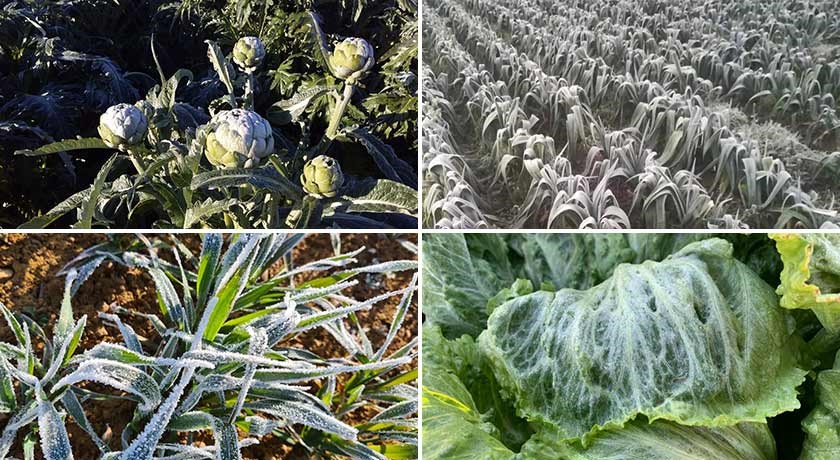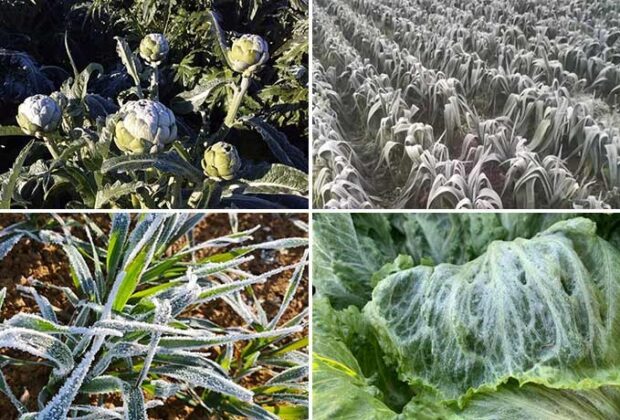As I delve into the topic of cold water damage, I find it essential to grasp the underlying principles of how temperature affects plant health. Cold water, particularly when it is below the optimal temperature range for a specific plant species, can lead to a myriad of issues. When plants are exposed to cold water, their cellular structure can become compromised, leading to stunted growth and even death in severe cases.

The physiological processes that govern plant life, such as nutrient uptake and photosynthesis, can be severely hindered by the shock of cold water. This is especially true for tropical plants that thrive in warmer climates; they are particularly sensitive to sudden temperature changes. Moreover, the impact of cold water extends beyond immediate physical damage.
I have observed that prolonged exposure can lead to secondary issues, such as root rot or fungal infections, as the plant’s defenses are weakened. The cold water can create an environment conducive to pathogens, which can further exacerbate the plant’s decline. Understanding these dynamics is crucial for anyone who wishes to maintain a healthy garden or indoor plant collection.
By recognizing the signs of cold water damage early on, I can take proactive measures to mitigate its effects and promote recovery.
Key Takeaways
- Cold water damage can occur when plants are exposed to low temperatures and wet conditions, leading to tissue damage and root rot.
- Assess the damage by checking for signs of wilting, discoloration, and mushy or slimy roots, and remove any affected plant parts.
- To revive plants, trim damaged foliage, repot in fresh soil, and provide warmth and proper air circulation to promote recovery.
- Ensure proper drainage by using well-draining soil, and pots with drainage holes, and avoiding overwatering to prevent waterlogged conditions.
- Adjust watering practices by allowing the soil to dry out between waterings and avoiding watering during cold periods to prevent further damage.
- Protect plants from future damage by providing shelter during cold spells, using mulch to insulate roots, and choosing cold-hardy plant varieties.
- Use fertilizers and nutrients to support plant recovery, such as applying a balanced fertilizer and using organic amendments to improve soil health.
- Monitor plant recovery by observing new growth, adjusting care as needed, and being patient as plants recover from cold water damage.
Assessing the Damage
Once I have a clear understanding of cold water damage, the next step is to assess the extent of the damage to my plants. This process involves a careful examination of both the foliage and the root system. I start by inspecting the leaves for any signs of distress, such as wilting, discoloration, or spots.
These symptoms often indicate that the plant is struggling to cope with the cold shock. I also pay close attention to any new growth; if the plant has stopped producing new leaves or stems, it may be a sign that it is in serious trouble. In addition to examining the leaves, I dig a little deeper—literally—by checking the roots.
Healthy roots should be firm and white or light tan. If I find that the roots are mushy or dark brown, this could indicate root rot, a common consequence of cold water exposure. By assessing both the above-ground and below-ground conditions, I can gain a comprehensive understanding of how severely my plants have been affected.
This assessment is crucial for determining the appropriate steps for recovery and ensuring that I address any underlying issues that may have arisen from the cold water exposure.
Steps to Revive Plants
Reviving plants that have suffered from cold water damage requires a multi-faceted approach. First and foremost, I focus on providing warmth. If possible, I move my plants to a warmer location or use heat mats designed for plant care.
This helps to stabilize their environment and encourages them to recover from the shock they have experienced. Additionally, I ensure that they are not exposed to drafts or sudden temperature fluctuations, as these can further stress the plants. Next, I consider adjusting my watering practices.
After experiencing cold water damage, it’s crucial to allow the soil to dry out slightly before reintroducing moisture. Overwatering can exacerbate root rot and other issues that may have arisen from the initial cold shock. Instead, I opt for a more measured approach, checking the soil moisture levels regularly and only watering when necessary.
This careful attention helps create an environment conducive to recovery while minimizing further stress on the plants.
Providing Proper Drainage
| Drainage Metric | Measurement |
|---|---|
| Surface Water Runoff | Volume in liters |
| Soil Permeability | Rate of water infiltration in cm/hour |
| Drainage System Capacity | Flow rate in liters/minute |
| Standing Water Duration | Time in hours/days |
One of the most critical aspects of reviving plants after cold water damage is ensuring proper drainage. Poor drainage can lead to waterlogged soil, which is detrimental to root health and can exacerbate issues like root rot. To improve drainage, I often report my plants into containers with drainage holes if they aren’t already in suitable pots.
Additionally, I mix in materials like perlite or sand with the potting soil to enhance aeration and drainage capabilities. I also pay attention to how I water my plants moving forward. Instead of saturating the soil all at once, I prefer to water gradually, allowing excess moisture to escape through the drainage holes.
This method not only prevents water from pooling at the bottom of the pot but also encourages healthy root growth by providing them with access to oxygen. By prioritizing proper drainage, I create an environment where my plants can thrive and recover from their cold water ordeal.
Adjusting Watering Practices
Adjusting my watering practices is another vital step in helping my plants recover from cold water damage. After experiencing such stress, I need to be mindful of how much and how often I water my plants. Initially, I may reduce my watering frequency significantly until I observe signs of recovery.
This allows the soil to dry out adequately between watering sessions, which is crucial for preventing further root issues. I also take into account the specific needs of each plant species in my care. Some plants prefer consistently moist soil, while others thrive in drier conditions.
By tailoring my watering practices to meet these individual needs, I can help ensure that each plant receives the right amount of moisture without risking overwatering or underwatering. This personalized approach not only aids in recovery but also promotes long-term health and vitality for my plants.
Protecting Plants from Future Damage
To safeguard my plants from future cold water damage, I take proactive measures in both their care and environment. One of the first steps I implement is monitoring water temperature before applying it to my plants. By using lukewarm water instead of cold tap water, I can help prevent any shock that might occur during watering sessions.
This simple adjustment can make a significant difference in maintaining plant health. Additionally, I consider seasonal changes and adjust my care routine accordingly. During colder months, I ensure that my indoor plants are kept away from drafty windows or doors where they might be exposed to chilly air.
For outdoor plants, I may use protective coverings or mulch to insulate their roots against sudden temperature drops. By being vigilant about environmental factors and making necessary adjustments, I can significantly reduce the risk of future cold water damage.
Using Fertilizers and Nutrients
Incorporating fertilizers and nutrients into my plant care routine becomes increasingly important as I work towards reviving damaged plants. After experiencing stress from cold water exposure, my plants may benefit from a nutrient boost to help them regain their strength and vitality. I opt for a balanced fertilizer that provides essential macronutrients like nitrogen, phosphorus, and potassium while also including micronutrients that support overall health.
I am careful not to over-fertilize, as this can lead to additional stress on already weakened plants. Instead, I follow recommended guidelines for application rates and frequency based on each plant’s specific needs. By providing targeted nutrition during this recovery phase, I can help my plants bounce back more effectively and encourage new growth.
Monitoring Plant Recovery
Finally, monitoring my plants’ recovery is an ongoing process that requires patience and diligence. As I implement various strategies to revive them from cold water damage, I keep a close eye on their progress over time. Regularly checking for new growth or signs of improvement helps me gauge whether my efforts are paying off or if adjustments are needed.
I also document any changes in appearance or behavior so that I can identify patterns over time. This practice not only helps me understand what works best for each plant but also allows me to learn from any setbacks along the way. By remaining attentive and responsive to my plants’ needs during their recovery journey, I can foster a thriving environment where they can flourish once again after experiencing cold water damage.
FAQs
What is cold water damage on plants?
Cold water damage on plants occurs when plants are exposed to cold water, which can lead to various issues such as frost damage, waterlogged soil, and root rot.
How can you identify cold water damage on plants?
Signs of cold water damage on plants include wilting, yellowing, or browning of leaves, stunted growth, and water-soaked spots on the leaves or stems.
How can you cure cold water damage on plants?
To cure cold water damage on plants, it is important to first remove any standing water and improve drainage in the soil. Prune any damaged or affected parts of the plant and provide proper care such as adjusting watering schedules and providing protection from cold temperatures.
Can cold water damage on plants be prevented?
Yes, cold water damage on plants can be prevented by avoiding watering plants during cold temperatures, providing proper drainage for the soil, and protecting plants from frost and cold weather. Additionally, choosing cold-hardy plant varieties can help prevent cold water damage.
Read Full Article


































